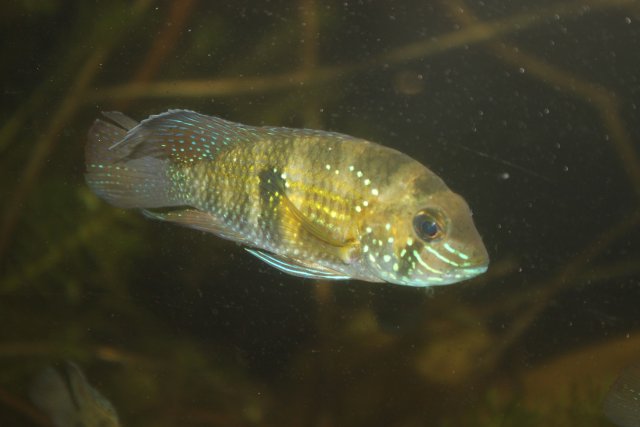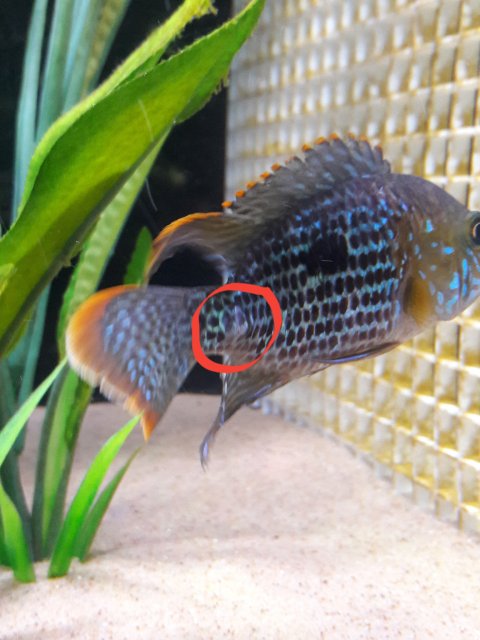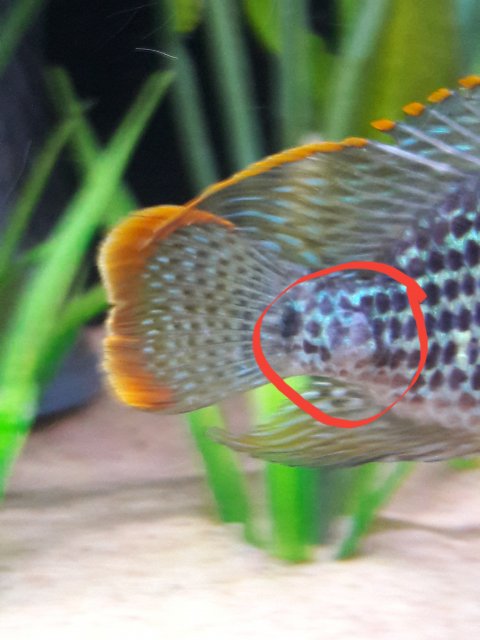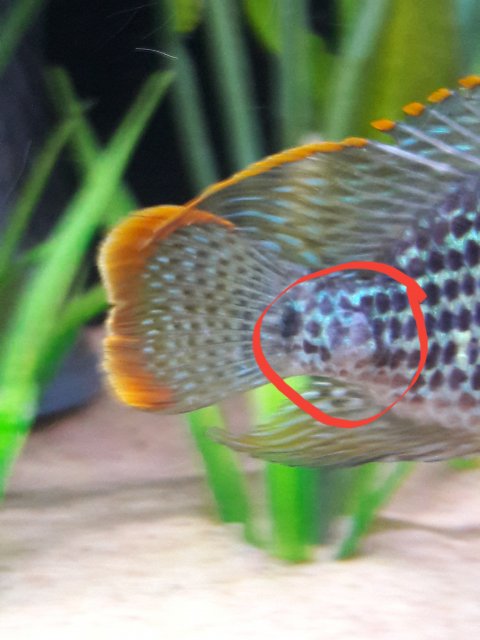So what would the diet be for a pike cichlid then? Would you be able to say what they are like for other fish too? thanksMouth structure of pike cichlids and GT's are dramatically different. Pikes have a different mouth structure than GT's, which indicate their feeding behavior. Also, the pike's poo "shape" is dramatically different than a GT. It's not long.
Green Terror Care Guide
- Thread starter TheReefer
- Start date
You are using an out of date browser. It may not display this or other websites correctly.
You should upgrade or use an alternative browser.
You should upgrade or use an alternative browser.
So what would the diet be for a pike cichlid then? Would you be able to say what they are like for other fish too? thanks
More piscivorous, and their mouth structure lends itself to set up a vacuum to suck up prey. Juan Miguel Artigas-Azas has a good article on mouth structure for cichlids, and what that means on their feeding habits. I think it's in Tropical Fish Hobbyist sometime earlier this year or late last year.
Ok thanksMore piscivorous, and their mouth structure lends itself to set up a vacuum to suck up prey. Juan Miguel Artigas-Azas has a good article on mouth structure for cichlids, and what that means on their feeding habits. I think it's in Tropical Fish Hobbyist sometime earlier this year or late last year.
Edit: Here it is for anybody who wanted to read it http://www.tfhdigital.com/tfh/mar_apr_2019/MobilePagedArticle.action?articleId=1463272#articleId1
Last edited:
Feeding strategies are another one of my bugaboos.
The idea that most cichlids are predominently carnivores put in many old or regurgitated species profiles, is quite lame.
Many profiles suggest feeding fish fillets, or beef heart, to species that may be insectivores (like Oscars) , or insectivores and algae eaters (like Herichthys), vegetarians like Cinclichthys, or fruit eaters like Vieja, and the result is, the disease section is filled with why is my Texas cichlid poop white and stringy, or why is my pearsei bloated,. I can imagine why if aquarists follow the BS they are fed by generalists who don't take the time to actually get the facts such things happen.
The majority of a Texas cichlids diet in nature is algae, sure it eats an occasional insect or its larvae, or some live bearer fry, but the algae and detritus which help clear the digestive tract, is paramount to good health.
The article in the post above, is one all cichlid keepers should all read.
If you have fish with a mouth like a pike, or a Parachromis, yes its obvious what they eat.

But an Andinoacara mouth , tells you something quite different.

Beside pellets, I give the Andinoacara coeruleopunctatus (close cousin to G.T.s), globs of hair algae, which they will pick on for hours.
Or take the Paretroplus maculates below, it is an inept fish predator. But is has strong jaws to crush small snails, and if the snail can't be crushed, its teeth work like a can opener routing out snail flesh.

I have spent hours watching JDs in nature and have yet to see more than occasional strike connect on live bearer fry.
The major part of what I've seen them eat is algae, detritus, and insect larvae.
Eden2
One size does not fit all with such a diverse group as cichlids, be it tank size, food, or water parameters.
The idea that most cichlids are predominently carnivores put in many old or regurgitated species profiles, is quite lame.
Many profiles suggest feeding fish fillets, or beef heart, to species that may be insectivores (like Oscars) , or insectivores and algae eaters (like Herichthys), vegetarians like Cinclichthys, or fruit eaters like Vieja, and the result is, the disease section is filled with why is my Texas cichlid poop white and stringy, or why is my pearsei bloated,. I can imagine why if aquarists follow the BS they are fed by generalists who don't take the time to actually get the facts such things happen.
The majority of a Texas cichlids diet in nature is algae, sure it eats an occasional insect or its larvae, or some live bearer fry, but the algae and detritus which help clear the digestive tract, is paramount to good health.
The article in the post above, is one all cichlid keepers should all read.
If you have fish with a mouth like a pike, or a Parachromis, yes its obvious what they eat.

But an Andinoacara mouth , tells you something quite different.

Beside pellets, I give the Andinoacara coeruleopunctatus (close cousin to G.T.s), globs of hair algae, which they will pick on for hours.
Or take the Paretroplus maculates below, it is an inept fish predator. But is has strong jaws to crush small snails, and if the snail can't be crushed, its teeth work like a can opener routing out snail flesh.

I have spent hours watching JDs in nature and have yet to see more than occasional strike connect on live bearer fry.
The major part of what I've seen them eat is algae, detritus, and insect larvae.
Eden2
One size does not fit all with such a diverse group as cichlids, be it tank size, food, or water parameters.
These are my old gt's. I couldn't imagine trapping this male in a 40.
These fish energetically utilised the whole of this 210 gallon. Anybody who has kept these type of cichlids in bigger tanks will realise just how absurd the idea is of trapping one in a 40 gallon for life.
I know my tank is not a river but it does give what I believe to be basic requirements. Room to exercise, room to establish territory, enough decor to hide and provide some interest and stimulation and enough water to provide stable conditions.
A lot of the old guidelines were wrote in the 50's. I do think there is a change in attitude to what these cichlids need. It just seems some care more, or are quicker to catch on than others.
Let's not keep 12inch cichlids in 40 gallons. It's not fair and it's not nice.
These fish energetically utilised the whole of this 210 gallon. Anybody who has kept these type of cichlids in bigger tanks will realise just how absurd the idea is of trapping one in a 40 gallon for life.
I know my tank is not a river but it does give what I believe to be basic requirements. Room to exercise, room to establish territory, enough decor to hide and provide some interest and stimulation and enough water to provide stable conditions.
A lot of the old guidelines were wrote in the 50's. I do think there is a change in attitude to what these cichlids need. It just seems some care more, or are quicker to catch on than others.
Let's not keep 12inch cichlids in 40 gallons. It's not fair and it's not nice.
I remember going to zoos back then (the 50s) as a child, and it was common practice to keep big cats like lions in 40 ft cages. Most enlightened zoos would find that abhorrent.A lot of the old guidelines were wrote in the 50's. I do think there is a change in attitude to what these cichlids need. It just seems some care more, or are quicker to catch on than others.
And when new aquarists are told yes, a puddle is OK, they almost always figure they can add more fish, and wonder why the G.T, or Oscar, mauls the any new comers.
I have watched a small pair of Rocio (JDs) maybe 5- 7")) defend a territory of about 250 gallons from all other cichlids.
starting at the 50 second mark in the video below.
JDs and Catfish of Cenote Cristalino
Doen't look like much at the moment, could be an injury (is that why the divider is in place?)MY Gt has a lump/ bulge on the side of his tail and was wondering if I should be concerned
What's on the other side of the divider? How big is the tank?
You could add some salt.
Don't raise the temp, if it is bacterial, high temps can make certain bacteria more virulent.
I "would" get worried if it turns white and fuzzy, then it could be fungus, or bacterial, and need a proper medication for either or.
Its 90 gallon tank on the other side is a convict cichlid. Temp is 76 degrees.. Could it be a broken tail ??? It's just bulge on one side






